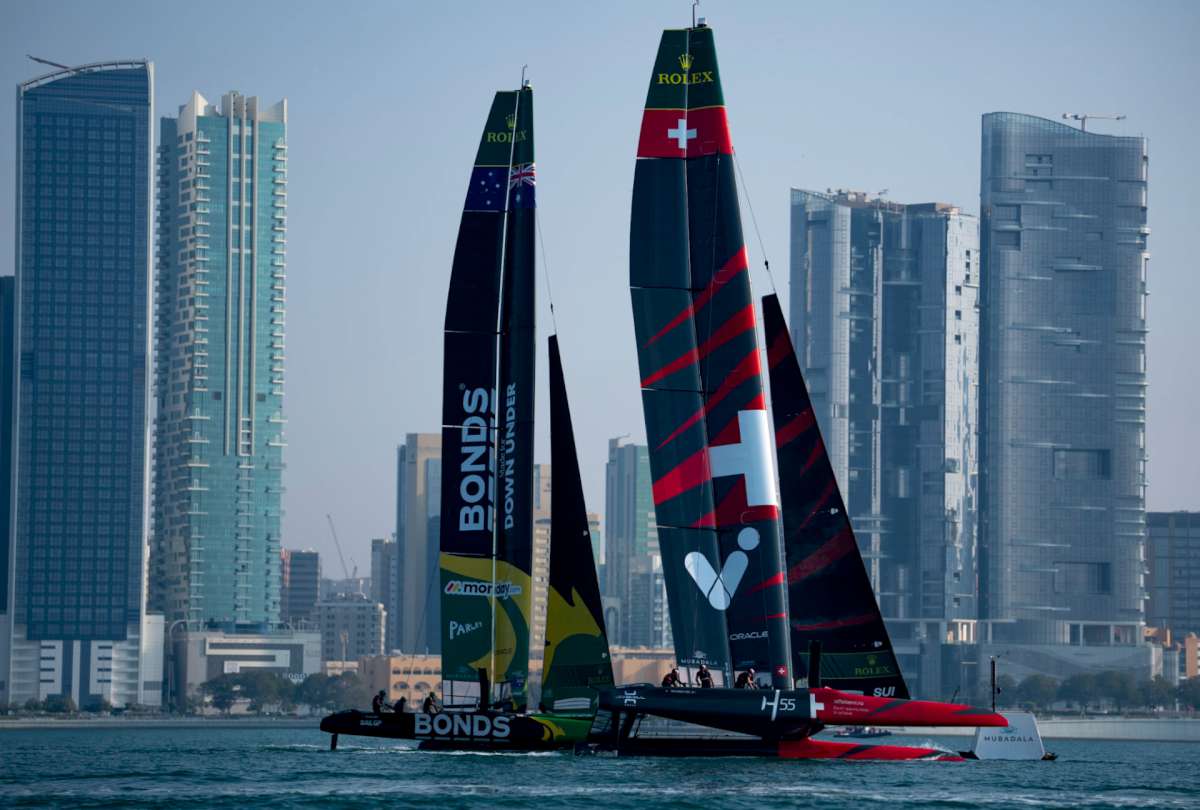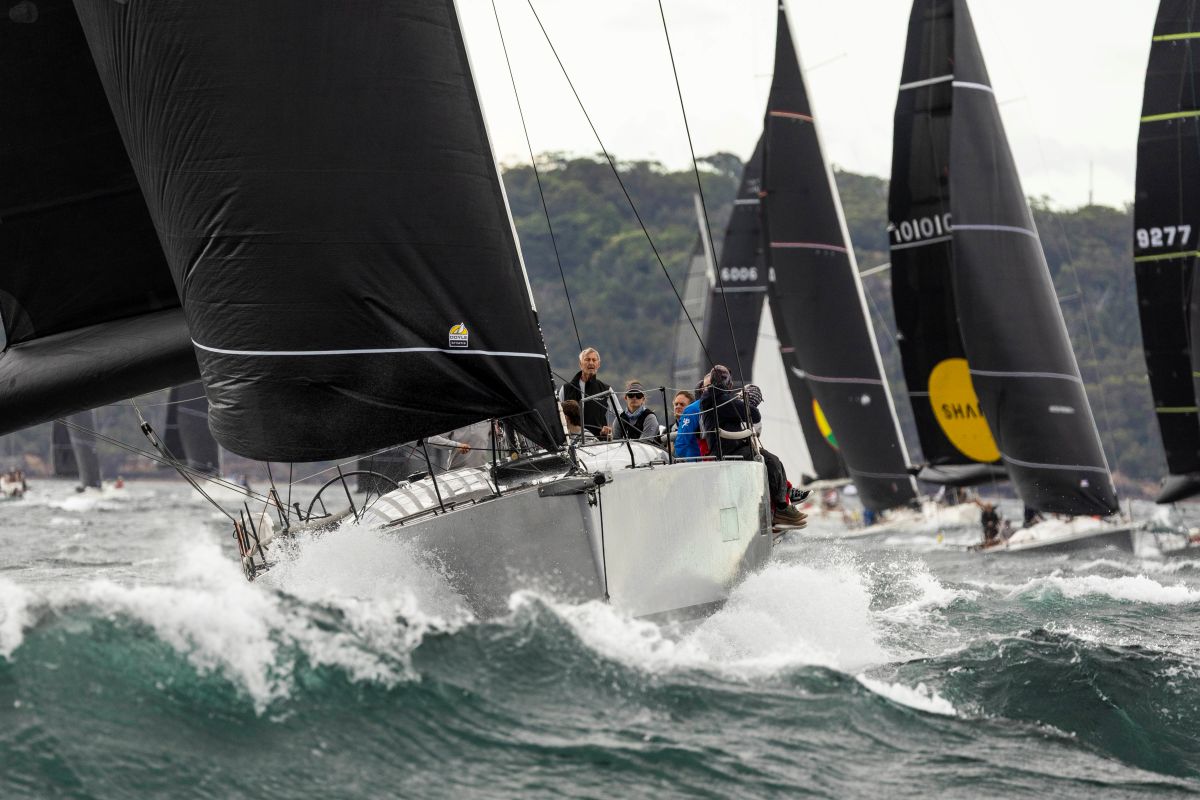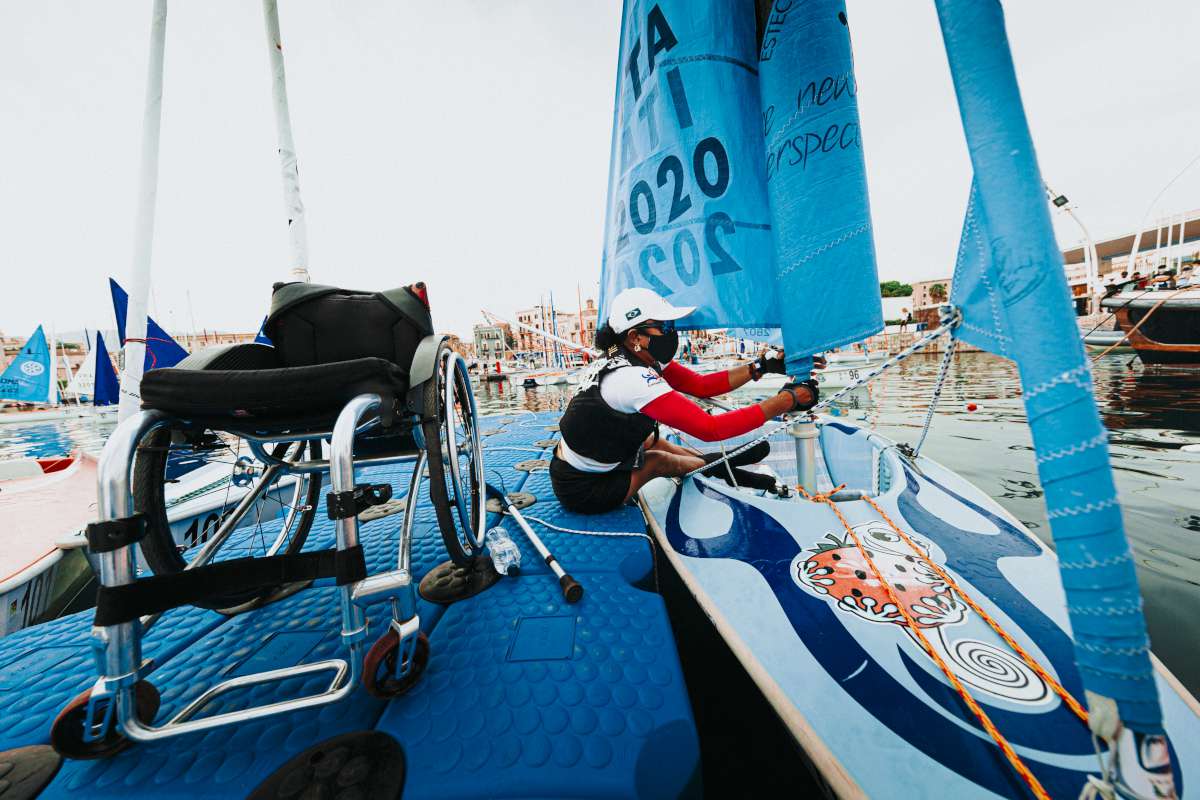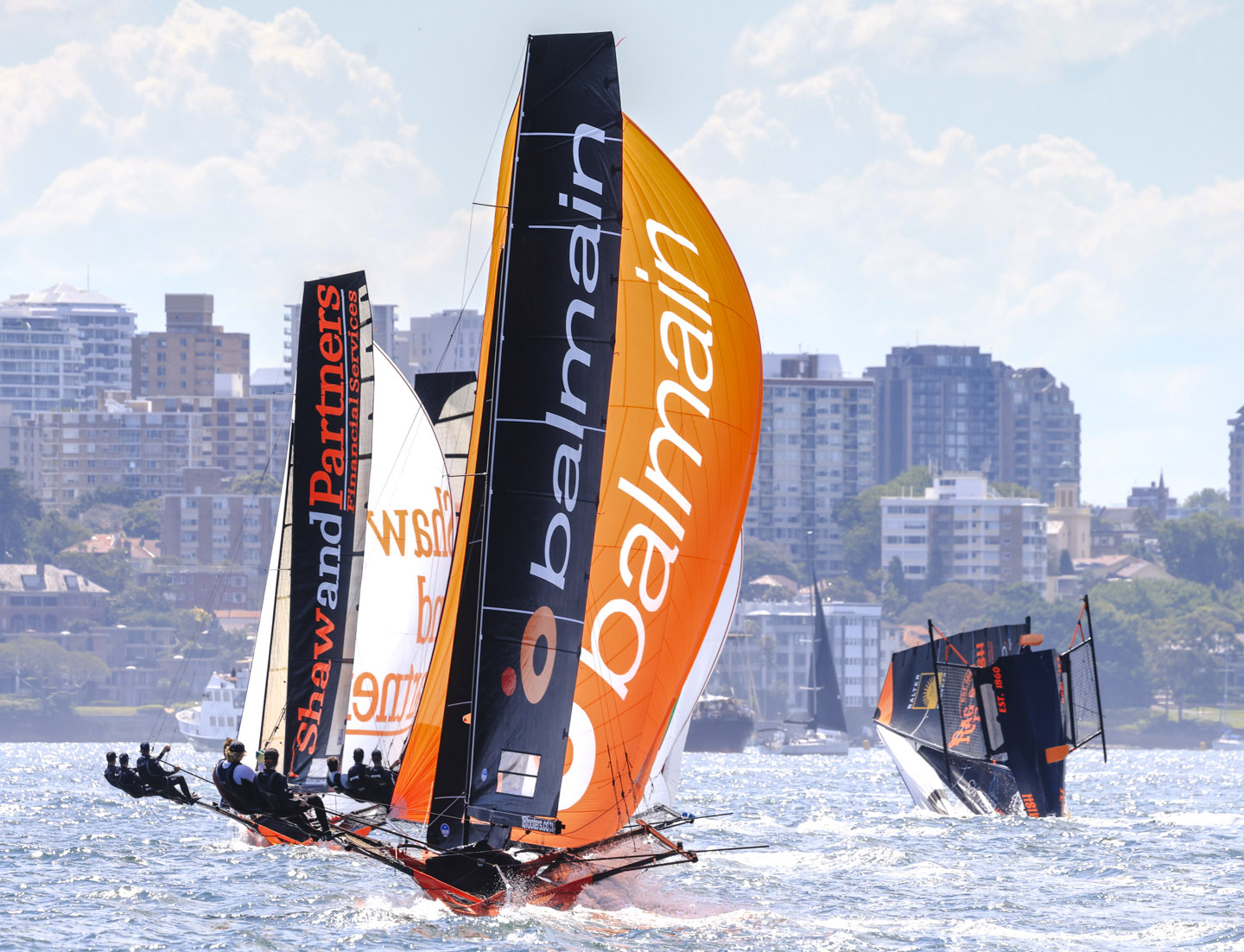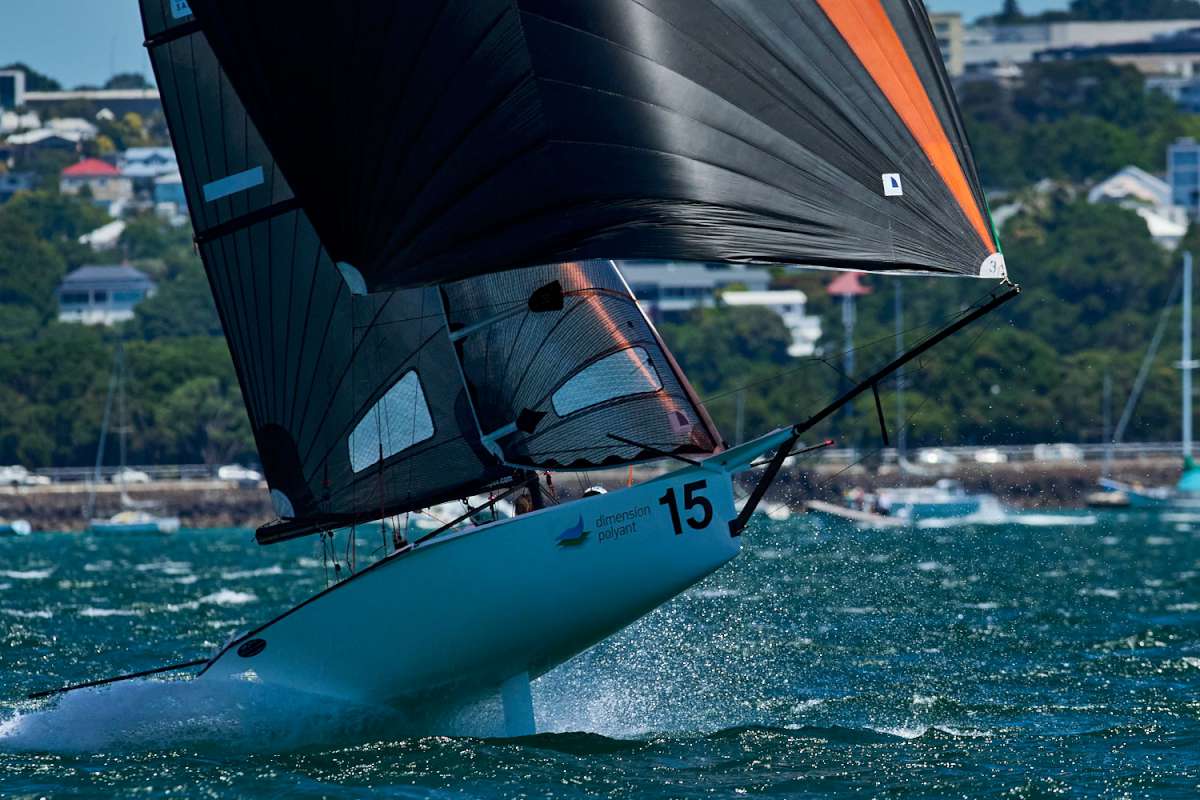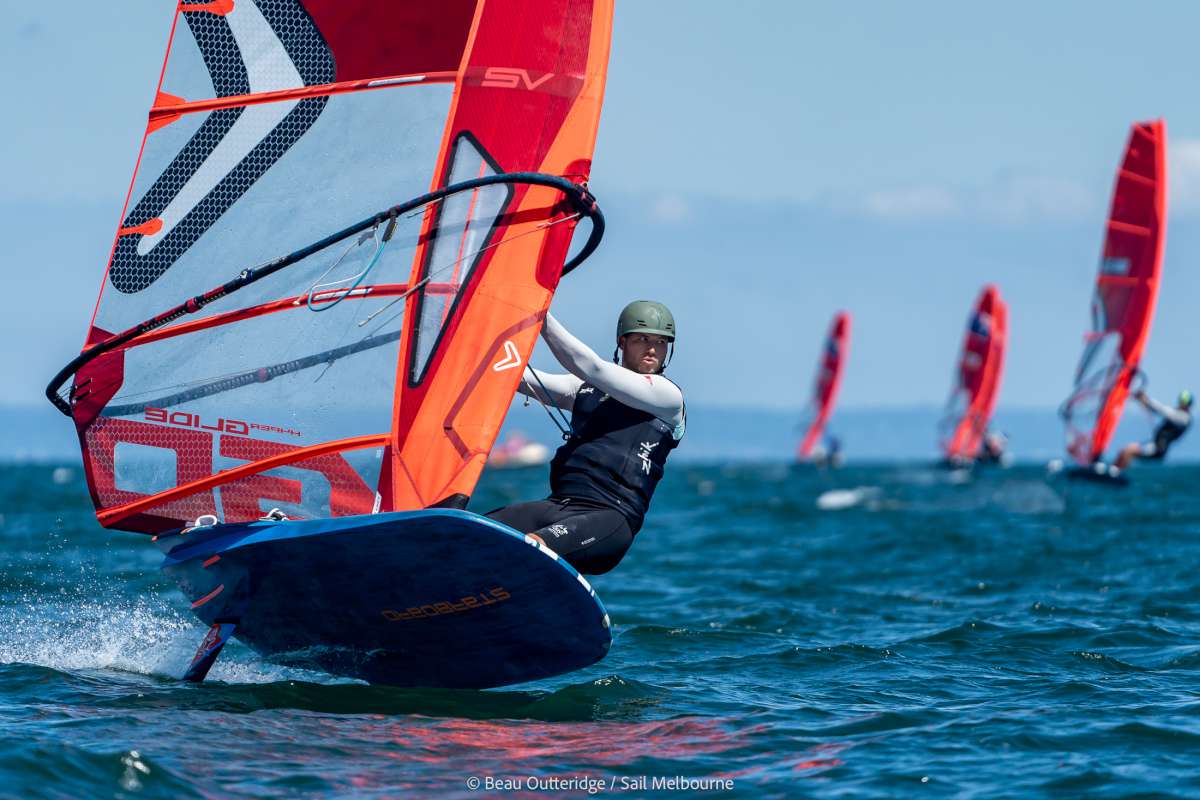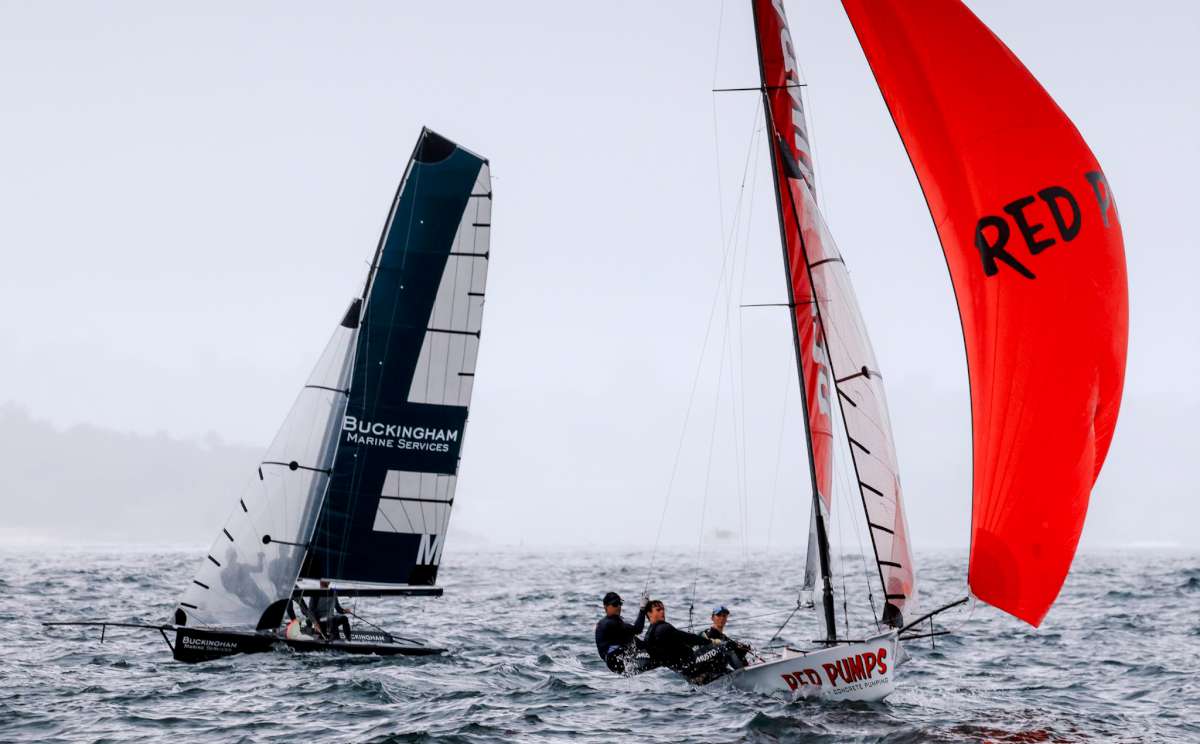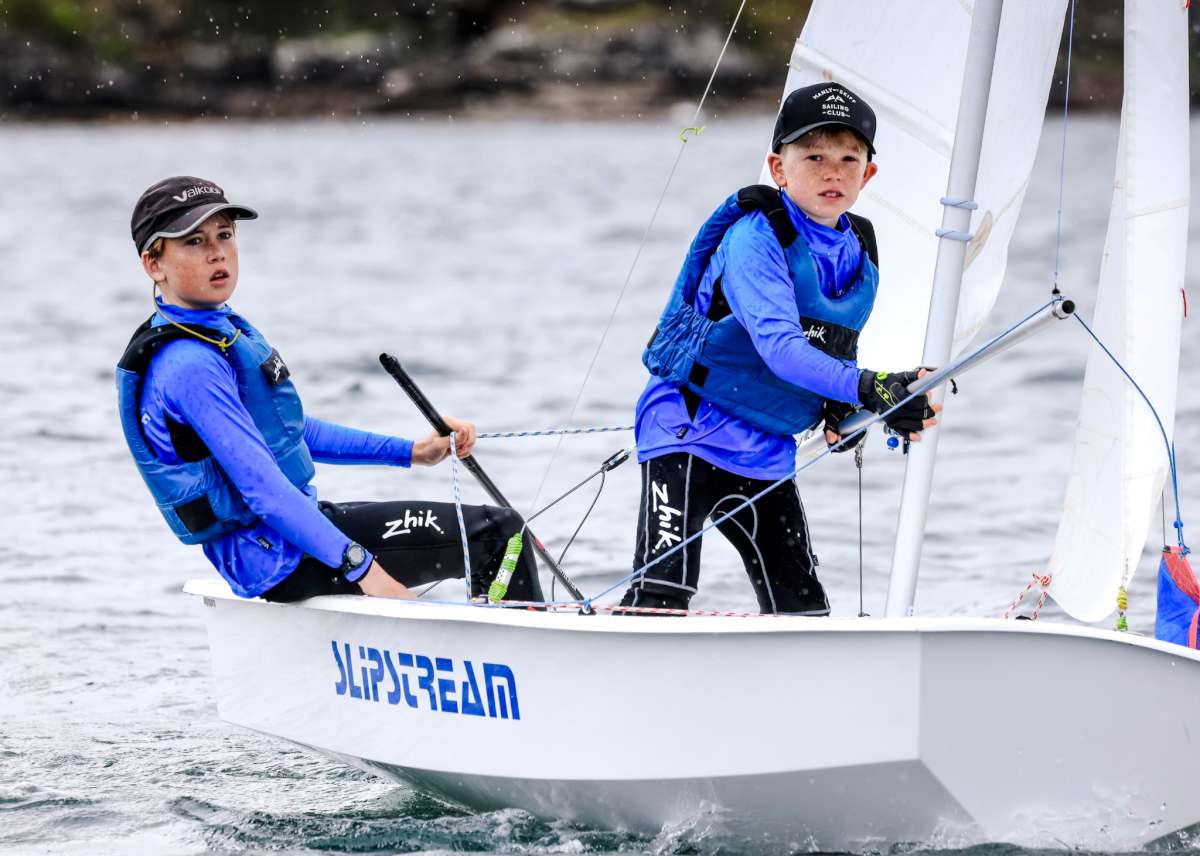Changes at Beneteau over the past several years continue to roll out through the series of yachts coming off the production line of the world’s largest boatbuilder.
We have seen the First range of Beneteau’s resurrected via a combination of buying a sport boat manufacturer as well as launching the bigger keelboat range. Now we are also seeing the revamping of the Oceanis line.
This is the third in the Oceanis line to come out in the past couple of years and utilises lessons learned from its predecessors. For starters, once again, while the company uses the same interior designers for all its yachts, the hull design is opened to all that may be interested. The 30.1 has been designed by Pascal Conq from the Finot Cong naval architecture firm.
It would appear this smallest of the Oceanis line is still looking for a good match between family sailing and fun. Therefore the call is for a yacht that is easy to sail but also a little bit racy. That is the hull design, but down below you want an interior that will fit a family comfortably; not always easy in a yacht under 30 feet.
Let’s see if the new model makes the grade.
Design wise
Walking up to the yacht at the dock of the Royal Prince Alfred Yacht Club in Sydney’s Pittwater, the first thing you notice is the full bows.
This is clearly the new design trend as it allows so much room on the inside while providing a bouyant counter-balance to the broad stern sections. This possibly has to be the fullest bow sections I have tested on a yacht so far.
In profile view there is a nice curve to the canoe body depth at the keel, which continues reflected with a similar curve up to the stern sections. No sharp angles, no steep curves, just a simple hull shape for easy sailing.
The stern waterline sections in plan view curve nciely while the hull maximum beam remains steady throughout. There appears to be little to no reduction in maximum beam right to the transom.
The hull chine starts at the bow but is not overly-pronounced along the hull length, resulting in a nice rounded transom with sheer topsides. First glance gives the impression of a forgiving hull shape connected to a maximum interior space.
In keeping with the idea of this being a family’s first yacht they have implemented some important variations here. First, while the hull shape is not skiff-like, the beam is. Above the waterline is wide for a nine metre yacht. The length to beam ratio is over 3, meaning the width is a third of the length and it holds that right to the transom. End result is a designed comfortable ride complemented with large interior space, which we will get to later.
Secondly, the beam has been purposefully kept at just under three metres to assist in making this model trailerable in some European countries without attracting a wide load impost. To this end the yacht has been designed with four different keel types: deep, shallow, lifting and swing.
To attract the family market the Oceanis 30.1 can be whatever you want it to be in whatever location. Live near the Mediterranean but want to cruise the fjords of northern Europe? No problems: option the lifting keel and tabernacle mast.
It is unlikely the retracting keel options will be taken up here in Australia as our wide load trailering laws are below 3m Australia-wide. But our loss is our gain as you get a wonderful large cabin for such a small yacht.
The sail plan also is quite clever in utilising racing yacht technology to make it simple to use. Options are an in-mast furling mainsail with the standard self tacking jib ideal for shorthanded sailing or, as on our test boat, furling genoa with standard main with lazy jacks and boom bag. A bowsprit is incorporated in the design with an offset bow roller so the downwind combination can be complemented with a code zero. This is handy considering the rig configuration.
The spreaders on the mast are well swept back, my guess is close to 40 degrees, plus they are long. This allows the removal of the backstay, which is a good move for such a small yacht as a backstay, even a split one, would hamper movement from cockpit to drop down transom.
An air draft of 13.66 metres, with the mast at around 3.5m from the bow, this is a high aspect ratio rig. Without a backstay it allows designer Conq to include a fat-head mainsail to deliver extra driving power; plus, with the mast that far back, it also allows a large headsail that can be self-tacking. In fact, on comparing the headsail foot length of the 30.1 to previous boats tested, it equalled some yachts over two metres longer.
What you have then is a large driving force up forward on those bouyant hull sections, backed up with a tall rig with plenty of power; but both sails being easy to handle. Nice work Pascal. As the designer himself noted about this design: “CFD studies were used to optimise the hull, resulting in a very stable bottom of moderate beam, without additional drag. Her twin rudders render her precise and very responsive, making it virtually impossible to lose control.”
Let us do a little comparison test. I have done over forty boat tests since taking on the role of editor and I have kept statistics on all those yachts.
If we go back a year I did a test on a Jeanneau Sun Odyssey 319 (March 2019). A similar sized yacht, but the differences in design parameters are intriguing.
First of all the Jeanneau is around half a metre longer on the waterline, but so too is the beam. This means the length to beam ratio is quite dramatic for similar sized boats.
Weight-wise the Oceanis is close to 20 per cent lighter displacement but a whopping near 40% less in ballast. Yet the keel depths on the standard deep keel is practically the same. This results in ballast ratio differences of 24 to 32.
Lets compare the sail plan. The forestay and mast heights are close enough to be the same but, for the Beneteau Oceanis, its headsail foot, the J measurement, is 10% longer while the boom (E) measure is close to 15% less. When you compare sail area to displacement ratios, it is almost identical. A slightly smaller, much lighter Oceanis design coupled with a higher aspect rig that is easy to handle.
An added benefit with the shorter boom length is less incursion of the boom over the cockpit, which could have been substantial with the mast so far back on the deck.
Other numbers to note given the differences in design, the displacement to length to sail area ratios show the Oceanis to sit smack dab in the middle of the light cruiser/racer class plus suitable enough for ocean cruising and perfect for coastal sailing.
Its capsize capability ratio, which is just a calculation of beam to displacement, places the Oceanis under the magical two mark, meaning it is considered a safe sailing boat.
All of which must surely be exactly how Pascal Conq and Beneteau wanted it to be: a new yacht owner’s entry level into sailing or even an accomplished sailor’s fun boat the whole family can enjoy racing or cruising.
Out sailing, the Beneteau Oceanis 30.1 does deliver both those points.
Taking a swifty
It was early April and Australia is in Covid-19 lockdown, so the plan was to tie the yacht to the RPAYC dock and not incur the wrath of any water police by taking the yacht out for a sail. Previously I had a few readers of the magazine say they had been pulled over sailing in Pittwater, so we decided that our excuse that we were sailing for a work-related exercise would not cut the mustard with the local constabulary.
Once we got to the dock, however, the temptation to take this little beauty out on such a perfect autumn day was too much. I am grateful.
As you would expect the departure from the dock was a breeze. The Oceanis can come with a tiller or the two steering wheels our test yacht had; again, that choice would depend on the buyer’s intentions: first time sailors would prefer the wheels but a more racy type would prefer the feedback of the tiller.
The wheels are set into low binnacles with no instrumentation to distract or block the interaction with the cockpit. They are also angled slightly, which I found easier to hold when standing or even sitting on the side deck.
The wheels are cross-linked to twin rudders set high along the waterline, so angled so each individual rudder will be at maximum depth when the boat is heeled.
Winches on the cabin top either side of the companionway handle all the halyards plus the mainsheet system connected to a bridle instead of a traveller. All other sheets ran back to the winches just in front of the wheels. These winches are nicely placed for a racing crew as well as the skipper.
So getting the mainsail up is quite easy, an option is a furling mainsail but really, this is unnecessary. Just take care of the fathead main on the lazy jacks when hauling up.
Unfurl the headsail and we are done. The standard Beneteau issue sails were remarkably well-shaped and in the gusty 10 knots to 15 knot breeze we were zipping. Pointing around the 35 degrees apparent we were easily hitting high five to six knots boat speed,
But it does have to be said that this yacht revels with cracked sheets, which is why it excels as a coastal cruiser. It only takes 12 knots of true wind at 60° apparent to hit the theoretical hull speed. That is with just headsail and main; crack open the asymmetrical off the bow sprit and watch the numbers leap, especially when it gets to 140° to150° off the bow.
This is a nifty little lady, but at no stage did we feel stressed. The wheel feedback is good and when hard on the wind and main cranked on, she heeled on to those nice rounded stern sections without a hint of round- up.
Both Flagstaff personnel, Graham Raspass and Michael Coxon, have taken the Oceanis 30.1 out for solo sailing and both spoke with wide open smiles of how easy iut was to get out on the water and the yacht’s ability to handle the open ocean swell and give a wonderful comfortable ride.
Not so squeezy
You can see in the images just how large the cockpit is even with a double-leaf table, which can be removed for racing. So how does this impact down below?
Coming down the companionway stairs you note straight away the open space this 30 footer immediately conveys. Clever sight line tricks are used by opening the twin doors on the forward bulkhead into the main berth cabin.This view is only possible by the mast post postioned further aft than normal, whereas you would normally have it placed against that forward bulkhead blocking the double door option.
Now, with the mast post in the middle of the central saloon table, it becomes a handy handhold right where you need it.
As for the table itself, it is another double-leaf that comfortably seats four; or six in a little more squeezy soiree.
To assist in making that squeeze a little better is the simple nifty conversion of the navigation table. On the starboard side bench seat, at the rear, you can remove a single seat portion of the bench and swivel to face aft. The compact nav table then folds down from the wall.
On the hull wall to your left is all the switches and radios that you need. This panel also folds down to do any electrical fixes you need. Actually, the access to this panel is, probably, amongst the best I have seen; there is plenty of extra length given to the wiring to ensure it drops down fully.
Given the nav. table folds up out of the way, it becomes obvious this is not a spot for delicate instruments, but a computer tablet in a protective cover would be fine. Alongside this station is another sign of the times with a twin USB port available.
When the nav seat is replaced, both bench seats are two metres long; perfect as extra berths if needed. Underneath each is plenty of storage. This is useful as the saloon floor is recessed to the ring frame level making the bilge almost non-existent; plus the seating is against the hull, so where you would normally expect cupboards behind the seats, there are none.
Getting this amount of lounging space in a 9m hull comes with a price, but it is easy enough to stack and store provisions under these bunks. The other advantage of the floor sole being so low is the access to important through-hulls and keel bolts; plus the 2m head room at the mast!
This is a light and airy space with large hull windows, cabin roof windows and an opening hatch just forward of the mast post.
On the port side is a small but suitable L-shaped galley. Not much to write here: two burner cook top above a small oven plus a single sink that is deep and big; but the refrigerated unit is exceptionally large for a small boat. I did a quick calculation and make it to hold about 0.1 cubic metres. Access is easy with a huge full-sized opening.
Once again, however, storage in the galley is limited, relying on under the bench seats to hold the goods while the galley may be able to store the pots and pans, plates and cutlery et al.
Alongside the galley is the aft port cabin. Due to the long length of the benches in the cockpit you then have a long double berth in this cabin. Plus, due to the continued maximum beam to the aft sections, this berth is still a metre across at the feet end. It sweeps across under the cockpit to the centreline behind the companionway engine room. So you end up with one berth at 2m long but the centreline berth is shortened to fit to 1.8 metre, or six foot.
There is an opening hatch on the cockpit seat wall and another venting hatch that opens just behind the port winch alongside the companionway. This extra hatch performs a double function; besides letting off any heat from the cabin when sailing, it also becomes a useful method to drop the bitter ends of any halyards coming off the winch, getting them out of the cockpit and ensuring the reduction of any snaggles. Once again there is a USB double port in this cabin.
The combined head/shower cabin on the starboard side of the companionway is large for a 9m yacht as there is no starboard aft cabin. The head itself sits on the aft bulkhead facing forward, which you would not expect on such a small sized yacht. Normally the head sits up on the hull as it takes up less space there.
The shower rose doubles as the tap in the sink. Taking a shower is a simple matter of dropping a supplied waterproof cover over the sink and cupboards and pulling the rose out of its tap hold position.
Once again, a neat little set-up that makes a small yacht appear capable of bigger things.
Behind the head cabin is an enormous lazarette accessed from the cockpit. This is the major storage area for the boat: fenders, mooring lines, outboard engine, boom cover; plus even more providoring would easily fit in here.
Given all this space in the saloon cabin, how is the size of the main cabin up forward? For a start the double opening doors adds extra scope to this area but, even with the doors closed, there is plenty of room here.
You step down from the forward ring frame onto the hull here to give you 2m headroom at the bed base where there is also an overhead hatch, the only natural light emitter in this cabin.
There is a hanging locker to port and a five shelf locker to starboard. The bed is 2m long and 1.8m wide; at the foot, against the forward bulkhead, it reduces to just a half metre.
Lift up the mattress and look under the bed and you see another benefit of such bouyant forward sections in this design: here sits the 160 litre water tank.
Again, there is another USB double port in this cabin.
Before we go back on deck, lets look at the engine room and keel. Under the saloon table is eight keelbolts: one each fore and aft and then three pairs in between. The pairs are connected by a joint thick base plate. This is a strong construction for such a small yacht, most encouraging to see.
The through-hulls are all bronze as standard.
Under the gas-strutted companionway steps lies this yacht’s Yanmar 3YM20. This is a 15 kilowatt (21 horsepower) upgrade from the standard eleven kilowatt (15 horsepower). It should give you 33 hours of cruising speed from its 130 litre fuel tank.
Along with the beefiness of the keel connection I also noticed the attention to detail in this engine enclosure. Normally panels of insulation are glued to the interior walls leading to gaps where the panel was too small or got in the way of other bibs and bobs. But, for this Oceanis 30.1, the insulation is covering the entire box, not one piece of the enclosure walls is visible.
When under motor, with wide open throttle, this coverage came into its own, on my decibel meter it was only showing the noise of the inside of a car.
Another impressive effort for what is, essentially, an entry-level yacht.
Up top
Back on deck it is a simple layout, but again some interesting changes. As mentioned previous there is a large table in the cockpit that does not seriously impede traffic.
The bench seats are 1.5m long, to convey how big that is it constitutes 17% of the entire hull length! Mentioned before is the large lazarette under the starboard seat. Lights run at the base of these seats.
At the stern it is a simple method of unbolting and hand-dropping the transom seat for easy access to the water. I was pleased to see that the yacht boarding ladder is not incorporated in this seat. The boarding ladder is affixed to the starboard side of the stern, behind the main steering station.
This, to me, is another clever move. If someone falls overboard it is not necessary to drop the transom seat to lower the ladder. Plus the ladder is low enough to be accessed by someone in the water. Thoughtful.
An outboard shower is to port along with the gas bottle locker.
The side decks are narrow due to the large cabin top plus relatively narrow beam as discussed earlier. There is an inbuilt low toe rail on the gunnel to stop slipping, it has gaps at each stanchion to drain any deck wash.
At the bow the sprit has a bow roller offset to port and an electric windlass in the large chain locker, another benefit of full bow sections. There is no bow locker, hence the use of the large lazarette. The anchor is a Delta.
This is an easily enjoyed yacht. Designed to be simple including only what is required to carry four comfortably; but also designed to include those little extras that come from thinking deeply about what enhances the experience. To this end the hull shape delivers nifty speeds on all points of sailing under a deck layout that makes it a delight to sail for entry level sailor families up to experienced sailor fun. ≈





